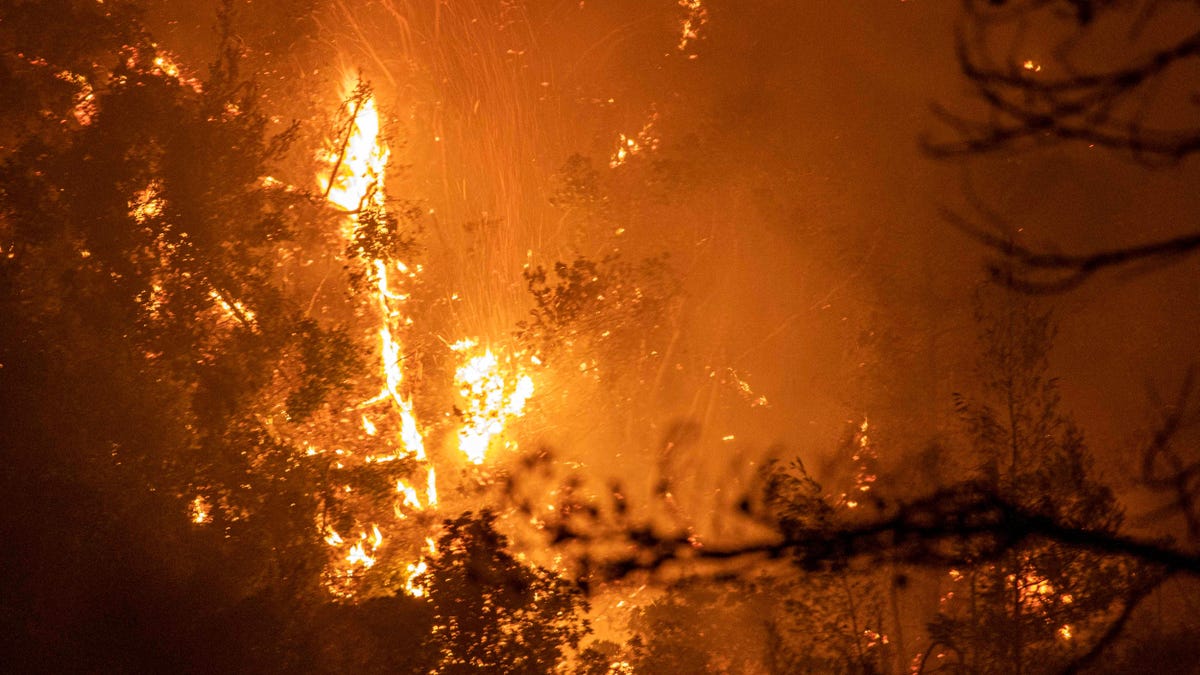Wildfires Are Fueling a Dangerous Feedback Loop of Arctic Warming

Wildfires across the globe are contributing to conditions that make future fires more likely, new research finds. The study estimates that brown carbon emissions from sources like wildfires are a greater contributor to warming in the Arctic atmosphere than previously thought. And because this warming then contributes to the weather conditions that give rise to wildfires in the first place, today’s fires are likely helping fuel increasingly stronger ones in the future, the researchers say.
Brown carbon aerosol particles are known by their ability to absorb sunlight. This then traps solar radiation within Earth, as opposed to other aerosol particles that reflect it back out to space. Alongside black carbon—caused by the incomplete burning of fossil fuels that can be seen from sources like diesel engines—brown carbon is thought to play an important role in climate change, but there’s still much we don’t know about its relative contributions to it.
This new research, published in the journal One Earth, was five years in the making. In 2017, scientists took the Chinese icebreaker ship Xue Long on a two-month expedition to the Arctic. Once there, they took direct measurements of the atmosphere, focusing particularly on brown carbon emissions that had ended up there.
The Arctic has been warming even faster than the rest of the world, and the team’s modeling, based on the direct observations made from their trip, indicate that brown carbon has been one major reason why.
“The warming effect of brown carbon in the Arctic was generally ignored in previous climate models,” study author Pingqing Fu, a professor of atmospheric chemistry and biogeochemistry at Tianjin University, told Gizmodo in an email. “By the addition of it, we find that brown carbon can be a strong warming agent in the Arctic, which highlights the importance to manage the wildfires in its surrounding regions in the future.”
Fu and his team now figure that brown carbon’s warming effect in the Arctic is about 30% of that of black carbon’s. About 60% of these emissions come from sources of biofuel burning, including wildfires in the middle and high latitude areas of the world, which release both black and brown carbon into the air. And as the Arctic warms, so do other regions of Earth, setting the stage for an ever-increasing ramp-up of climate disaster.
“The increase in brown carbon aerosols will lead to global or regional warming, which increases the probability and frequency of wildfires. Increased wildfire events will emit more brown carbon aerosols, further heating the earth, thus making wildfires more frequent,” Fu said.
So far, wildfires are holding up their end of the bargain. Last year, fires broke regional records in carbon emissions, including in parts of Siberia close to the Arctic. Last month, a UN report estimated that the number of wildfires is likely to increase around 30% percent by 2050 and 50% by 2100. Much as the current study’s authors found, these fires are likely to have a “mutually exacerbating” effect on climate change, the UN authors concluded—one that countries aren’t prepared for.
Indeed, while the news gets more dire every day, global cooperation on fighting climate change continues to be muddled as even meager attempts to dial down emissions in general are being fiercely resisted by some governments and fossil fuel interests.
The authors, for their part, say that “the careful management of vegetation fires, especially in the mid- to high latitudes of the Northern Hemisphere, will prove important in mitigating the warming in the Arctic region.” And Fu notes that every effort to tamp down emissions across the board still matters.
“People can do something to hamper the positive feedback loop among the link of brown carbon, arctic melting, and wildfires. For example, the continuous reduction of the anthropogenic activities such as fossil fuel combustion efficiently decreases the emissions of both black carbon and brown carbon,” he said.
The team next plans to investigate how wildfires may affect the aerosol chemistry of the marine atmosphere over the western Pacific, as well as its potential climate effects there.